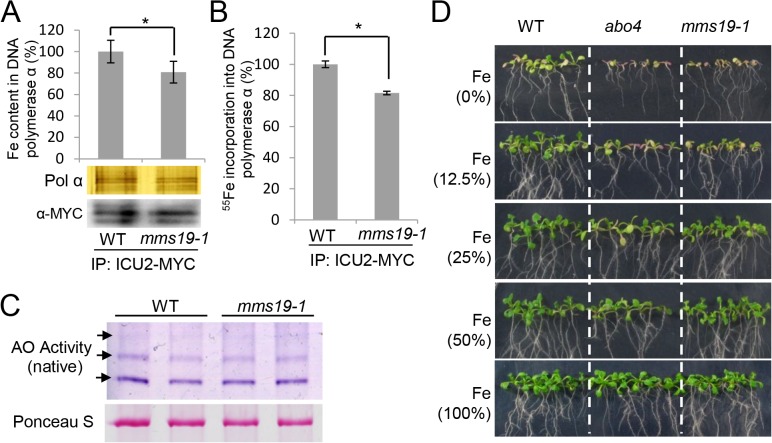Fig 6. The mms19 mutant incorporates a reduced level of Fe in ICU2 and is sensitive to Fe absence.
(A) Fe content of ICU2 in the wild type and mms19. The protein extraction was affinity purified by anti-Myc antibody-coupled beads and eluted three times by 0.1 M ammonium hydroxide. The three elutions were combined and subjected to Fe content detection by ICP-MS (Themo ICP-MS XII). The affinity purified ICU2-Myc in the wild type and the mms19 mutant was separated by SDS-PAGE and subjected to silver staining and western blotting as controls. The results of three biological repeats are indicated. Error bars show the SD. Asterisks indicate significant differences as determined by the t-test (P<0.05). (B) 55Fe incorporation into ICU2 in the wild type and the mms19 mutant. The same affinity purification method was used as in (A), and the radioactivity of 55Fe in ICU2 was measured by liquid scintillation counting. Triplicates were performed. Error bars show the SD. Asterisks indicate significant differences as determined by the t-test. (C) The activities of aldehyde oxidase (AO) isozymes in wild-type and mms19 mutant seedlings. The purple bands indicated by arrows represent the activities of AO proteins. The staining by Ponceau S is shown as an equal protein loading control. (D) The mms19 and abo4 seedlings were more sensitive than wild-type seedlings to reduced FeSO4 concentrations. Seedlings were photographed after they had grown for 10 days on MS medium plates with different FeSO4 concentrations. 100%, 50%, 25%, and 12.5% represent 2.78, 1.39, 0.70, and 0.35 g/l of FeSO4.7H2O in MS medium.

